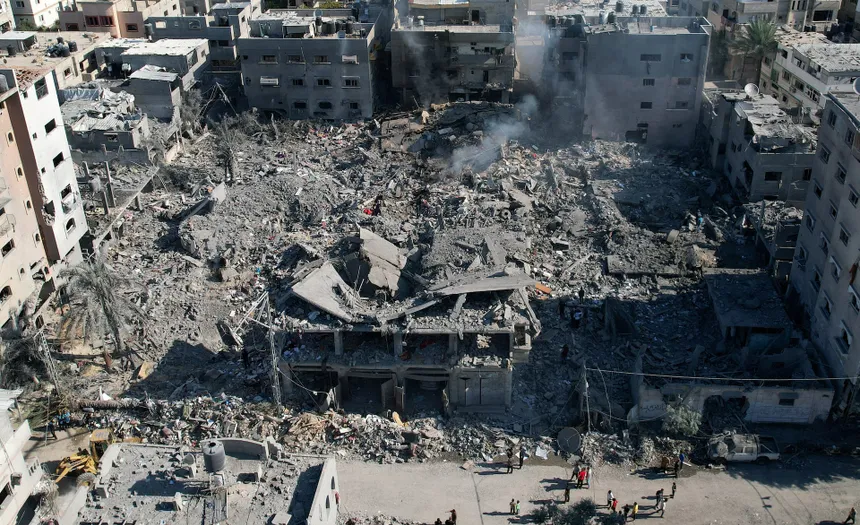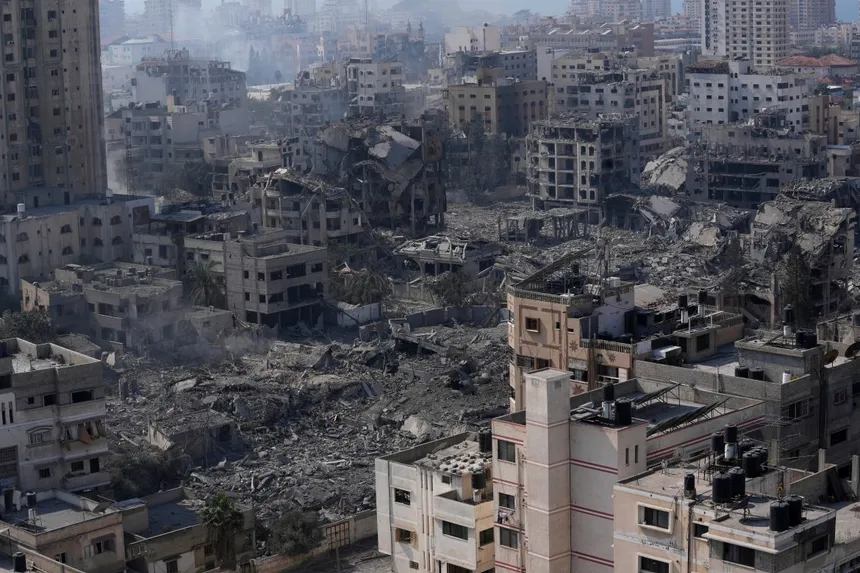The article reports on the ongoing conflict between Israel and Hamas in the Gaza Strip, as Israeli forces intensify their air and ground attacks on the besieged Palestinian enclave. The Israeli military claims to have successfully targeted Hamas weapons makers and fighters, including a top Hamas armourer, while Palestinian media reports on clashes between militants and Israeli forces.
Gaza City, the main stronghold of Hamas, is under siege, with Israeli forces encircling the city and troops advancing to its heart. Despite this, Hamas claims to have inflicted heavy losses on the Israeli military, although the accuracy of these claims is difficult to verify. The situation on the ground is grim, with more than 10,000 Palestinians killed, 40% of them children, according to counts by health officials in Gaza.
Israel’s military goal is to eliminate Hamas’ vast tunnel network, which stretches for hundreds of kilometres beneath the territory. The tunnels, built by Hamas, allow the militants to launch ambushes against Israeli forces and are seen as a major threat by the Israeli military. Israeli tanks have encountered heavy resistance from Hamas fighters using these tunnels, with sources from Hamas and Islamic Jihad claiming that the militants are using the tunnels to launch surprise attacks on Israeli forces.

Gaza Strip
The humanitarian situation in Gaza is dire, with nearly two-thirds of the population internally displaced, and thousands seeking refuge at hospitals or makeshift shelters. The UN has warned that Gaza’s health system is close to collapse, with hospitals running out of medicines and fuel, and many patients unable to receive treatment. Among the most vulnerable are the 350,000 patients with chronic conditions, including cancer and diabetes, as well as 50,000 pregnant women.
Israel’s long-term plans for Gaza remain unclear, with Defence Minister Yoav Gallant stating that the country would seek to have security responsibility for the territory “for an indefinite period” after the war. However, officials have ruled out governing Gaza, and Hamas has vowed to continue fighting until the siege is lifted.
As the conflict rages on, international leaders are increasingly urging a ceasefire. US President Joe Biden has called for a pause in fighting for humanitarian reasons, although Israel has refused to agree to a ceasefire until Hamas stops firing rockets into Israel. Saudi Arabia has also convened summits of Arab and Islamic nations to discuss the conflict, with Iranian President Ebrahim Raisi set to attend the Organisation of Islamic Cooperation summit.
On the ground, Palestinians are struggling to survive, with many forced to flee their homes and seek shelter in hospitals or makeshift tents. At Gaza City’s Al Shifa hospital, one woman, Um Haitham Hejela, described the dire situation, saying “There is no food, no water. When my son goes to pick up water, he queues for three or four hours in the line. They struck bakeries, we don’t have bread.” Despite the devastating impact of the conflict, both sides remain dug in, with no signs of a ceasefire on the horizon.











































